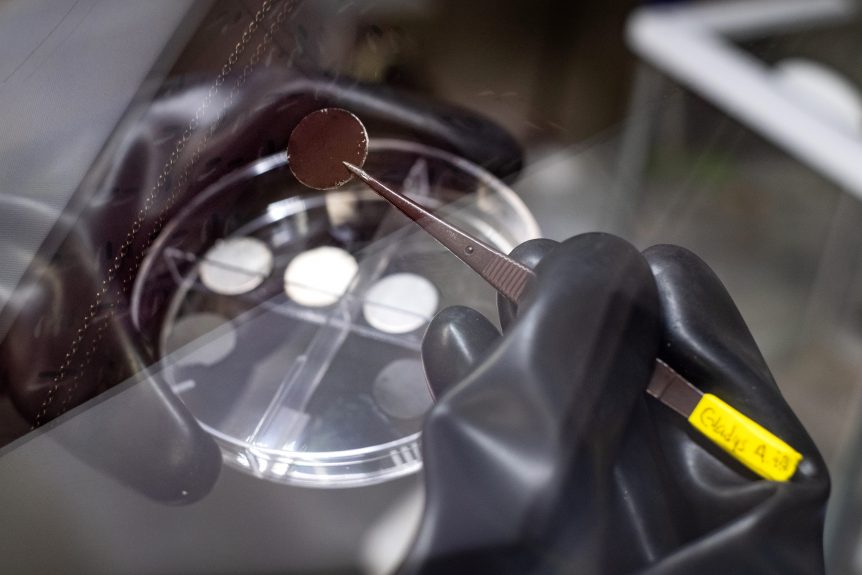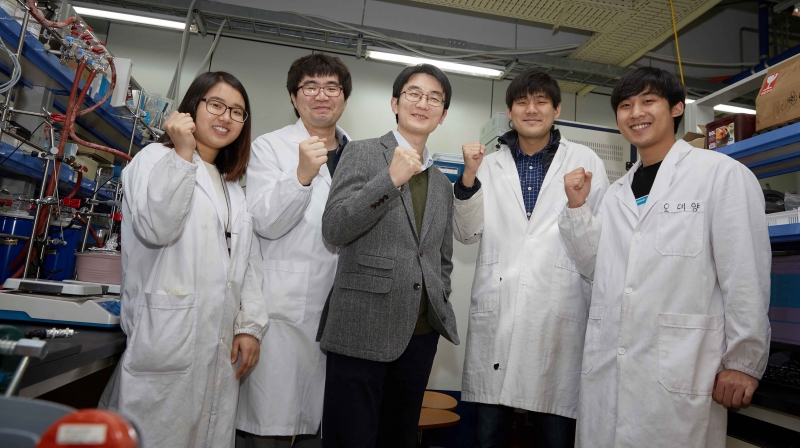Dr. James Tour of Rice University makes news regularly with different ways of making better batteries. His latest, a thin-film coating of carbon nanotubes, will enable lithium metal batteries to potentially achieve their full potential. According to the Tour Laboratory, that potential is worth considering. “Lithium metal charges much faster and holds about 10 times more energy by volume than the lithium-ion electrodes found in just about every electronic device, including cellphones and electric cars.” This promise is offset by problems with dendrite growth, the intrusion of tooth-like projections from the surface of the anode metal. If these growths expand far enough, they poke through the battery’s electrolyte and severely limit battery life. Worst of all, if the dendrites reach the cathode, they short out the battery, and possibly cause thermal runaway and fires. Tour and his student researchers have found that coating the lithium metal electrodes with a thin layer of carbon nanotubes keeps dendrites under control, and allows …
Battery Options for Range and Longevity
Two varying approaches to battery development may hold clues to future directions for energy storage. At the same time, their announcements, promising as they seem, reinforce our cautious attitudes toward how battery performance numbers are presented. PNNL Attacks the Electrolyte Issue According to Green Optimistic, “Researchers from the Pacific Northwest National Laboratory (PNNL) have developed a new formula for battery’s electrolyte solution to enhance its performance unprecedentedly in terms of its service life and storage capacity or an electric vehicle’s range.” The video gives an overview of what it takes to make a battery and hints at the reasons battery research takes so long to give up improved energy storage devices. Unprecedented the development may be, and the promise of a battery with a 7X longer lifespan and two-to-three times longer range than currently-available batteries certainly captures our attention. Its own press release suggests that PNNL researchers are enthusiastic about the longevity of their new chemistry. “When it comes to …
Deformable Flexible and Conductive – A Great Solid Electrolyte
Reporting on a new material that doesn’t seem real, a joint research team from Ulsan National Institute of Science and Technology (UNIST) and Seoul National University in Korea says it has developed a “highly-conductive, highly deformable, and dry-air-stable glass electrolyte for solid-state lithium-ion batteries. If those characteristics seem mutually exclusive, the electrical performance helps dispel skepticism. Assisted by colleagues at Lawrence Berkeley National Lab and Brookhaven National Lab, the researchers prepared the electrolyte using a “homogenous methanol solution,” and wetting exposed surfaces of the electrode active materials with the solidified electrolyte. Eureka Alert! quotes Professor Yoon Seok Jung (UNIST, School of Energy and Chemical Engineering) , “The research team also developed a material for the solid electrolyte by adding the iodized lithium (LiI) to the methanol liquid which is the compound (Li4SnS4) based on tin (Sn). The compound’s ionic conductivity was originally low, but it got increased by getting mixed with LiI. Consequently, by combining two materials together, it became possible to …
“Junkyard Wars” Rig Sprays Quantum Dots Precisely
Reported widely late last year as a “Junkyard Wars” contraption, University of Toronto researcher Illan Kramer’s spray rig for coating just about anything with a thin film of colloidal quantum dots (QCDs) offers the potential for making Kramer’s hopes come true. “My dream is that one day you’ll have two technicians with Ghostbusters backpacks come to your house and spray your roof.” Kramer is a post-doctoral fellow with The Edward S. Rogers Sr. Department of Electrical & Computer Engineering at the University of Toronto and IBM Canada’s Research and Development Centre. His spray equipment, composed of a “spray nozzle used in steel mills to cool steel with a fine mist of water, and a few regular air brushes from an art store,” manages to spread colloidal quantum dots with the precision usually found in atomic layer deposition managed in laboratory or carefully-controlled manufacturing conditions. He admits to the unaesthetic look of the setup, but notes that the $1,000 sprayLD system …
Getting Batteries in Line
In another bid to create the much-hoped-for 10X batteries, researchers at North Carolina State University are rolling their own. As noted in many articles, lithium batteries infused with silicon have a bad habit of swelling and contracting as they charge and discharge, pulverizing the silicon eventually. Depending on the surrounding materials, the destruction can take place fairly quickly, leading to reduced cycle life for the battery. North Carolina scientists are fighting to extend battery life, though, with what they call “A Novel Nano-architecture for Flexible Lithium Ion Battery Electrodes,” part of the title of their paper in the journal Advanced Materials. Many battery electrodes are some form of graphite composite, and the impetus to wrap these anodes or cathodes in silicon has strong motivation. “Putting silicon into batteries can produce a huge increase in capacity—10 times greater,” Dr. Philip Bradford, assistant professor of textile engineering, chemistry and science at NC State says. “But adding silicon can also create 10 times …



